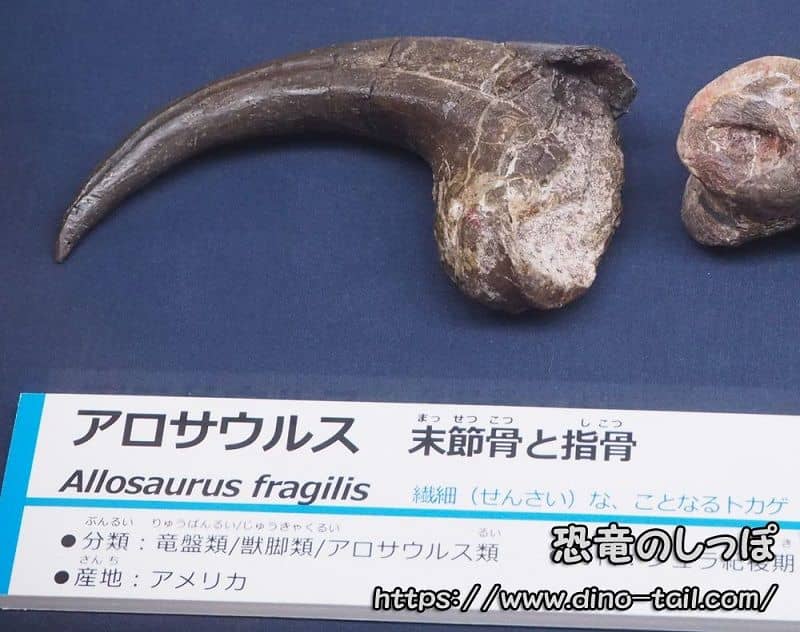Introduction
All living organisms are classified by being given a scientific name.
Scientific names are written in Roman letters based on Latin, following the universal rules of the International Code of Zoological Nomenclature.
However, they are not always strictly Latin; sometimes, local words are Romanized based on the discovery location or the describer's intent.
For example, the "bear" famous from Winnie the Pooh. "Bear" is a common name, not a formal scientific name. The scientific name for a bear is "Ursus."
Dinosaur Names: Genus and Species
The most famous dinosaur is probably Tyrannosaurus. Its scientific name is Tyrannosaurus rex. It is an organism denoted by the genus name "Tyrannosaurus" and the species name "rex."
Not just for dinosaurs, the scientific species name is expressed by writing the "genus name + species name."
Generally, the first letter of the genus name is capitalized.
A genus is a higher-level classification that groups species into a larger, common framework. The genus name is called the Generic Name in English. In the case of dinosaurs, Tyrannosaurus, Stegosaurus, and Triceratops are genus names (scientifically, these are not the names of species).
Returning to the bear from the previous section, within the "Genus (Generic Name) = Ursus," there are "Species (Specific Name) = americanus (American black bear), arctos (brown bear), maritimus (polar bear), thibetanus (Asiatic black bear), spelaeus (cave bear)." To call a brown bear by its scientific species name, you would write "Ursus arctos." (Common names are in parentheses for easier understanding.)
We humans, "human" is a common name. The scientific name for a human is "Homo (genus) sapiens (species)." It is read as Homo sapiens.

For a long time, only one species, rex, was registered in the genus Tyrannosaurus, but in 2024, Tyrannosaurus mcraeensis was described as a new species. In the genus Triceratops, two species, horridus and prorsus, are considered valid names.
In dinosaur books and other materials, it is common to use only the genus name. In museums, labels may show only the genus name in the local language, with the genus and species name written together in Roman letters.
Dinosaur Names (Generic Name) and Meanings
How many dinosaur names (genus names) do you know?
- [Tyrannosaurus], [Triceratops], [Stegosaurus], and [Iguanodon] are probably famous.
- I think many people also know the names [Spinosaurus], [Apatosaurus], and [Ankylosaurus].
- Those who can picture [Coelophysis], [Deinonychus], and [Oviraptor] may have read dinosaur books repeatedly.
- Those who know [Guanlong], [Tambatitanis], and [Caudipteryx] are likely quite the dinosaur enthusiasts.
The most frequently used word in dinosaur names (genus names) is probably "saurus." What does "saurus" mean?
"Saurus" means "lizard, reptile" in Greek Latin. The name "Tyrannosaurus" means "tyrant lizard," from "tyranno = tyrant (terrible king)" + "saurus = lizard." "Saurus" is also used for reptiles other than dinosaurs. For example, the marine reptiles "Tylosaurus," "Ichthyosaurus," and "Plesiosaurus" are not dinosaurs but have "saurus" in their names.
"Raptor" is also a common name in dinosaur genera. "Oviraptor," "Eoraptor," "Conchoraptor," "Microraptor," "Gigantoraptor," etc. "Raptor" means "thief." So, "Oviraptor" = "egg thief," "Eoraptor" = "dawn thief," "Conchoraptor" = "shell thief," and "Microraptor" = "small thief."
| Word | Meaning | Dinosaur (Example) |
|---|---|---|
| saurus | lizard | Tyrannosaurus, Allosaurus, etc. |
| raptor | thief | Eoraptor, Oviraptor, etc. |
| don | tooth | Iguanodon, Hypsilophodon, etc. |
| nyx | claw | Deinonychus, Baryonyx, etc. |
| ceratops | horned face | Triceratops, Protoceratops, etc. |
| mimus | mimic (similar to) | Suchomimus, Gallimimus, etc. |
Dinosaur Names (Specific Name) and Meanings
In the previous section, we discussed the genus names of dinosaurs. Now, how many dinosaur species names do you know?
Many people have probably heard of "Tyrannosaurus rex" (T-REX for short). But few people can probably recite species names other than T-REX.
The type species of the Jurassic king, the genus Allosaurus, is Allosaurus fragilis.
Allosaurus means "different lizard" in Greek, and fragilis means "delicate" in Latin. The scientific name was given to describe the lightweight nature of its vertebrae as "fragile, delicate." At the special exhibition "Dinosaurs of the Badlands" held at the Fukui Prefectural Dinosaur Museum in 2024, skull specimens of Allosaurus fragilis (specimen number: DINO2560) and Allosaurus jimmadseni (specimen number: DINO11541) were displayed for comparison.
The type species of the large herbivorous dinosaur representative, the sauropod Brachiosaurus, is Brachiosaurus altithorax.
Three species are described in the genus Brachiosaurus.
Brachiosaurus altithorax, Brachiosaurus atalaiensis, and Brachiosaurus nougaredi. There was once a species described as Brachiosaurus brancai, but it was reclassified into the closely related genus Giraffatitan. The type species of Brachiosaurus is Brachiosaurus altithorax. Altithorax means "high chest" in Latin.
The type species of Iguanodon, one of the first dinosaurs to be described in dinosaur research, is Iguanodon bernissartensis.
Five species, including those that require further study, belong to the genus Iguanodon.
The five species are Iguanodon anglicus, Iguanodon bernissartensis, Iguanodon atherfieldensis, Iguanodon dawsoni, and Iguanodon fittoni. Iguanodon means "iguana tooth." The type species of Iguanodon is Iguanodon bernissartensis, and the species name was given in honor of the Bernissart coal mine in Belgium, where over 30 complete skeletons were found.
The type species of the representative stegosaur with distinctive plates, Stegosaurus, is Stegosaurus armatus.
Three species belong to the genus Stegosaurus.
In addition to the type species Stegosaurus armatus, there are Stegosaurus mjosi and Stegosaurus homheni. Many more species were once described for Stegosaurus, but they were consolidated into three species in 2008 because no clear differences between the species were recognized.
In addition to adjectives describing features, species names are often derived from the names of researchers, supporters, creatures from mythology or movies, the names of the places where they were excavated, or the owners of that land. There are even species names derived from the Hogwarts School of Witchcraft and Wizardry from the "Harry Potter" series of novels, which was made into a movie, and from the name of a poet who had nothing to do with the excavation.
